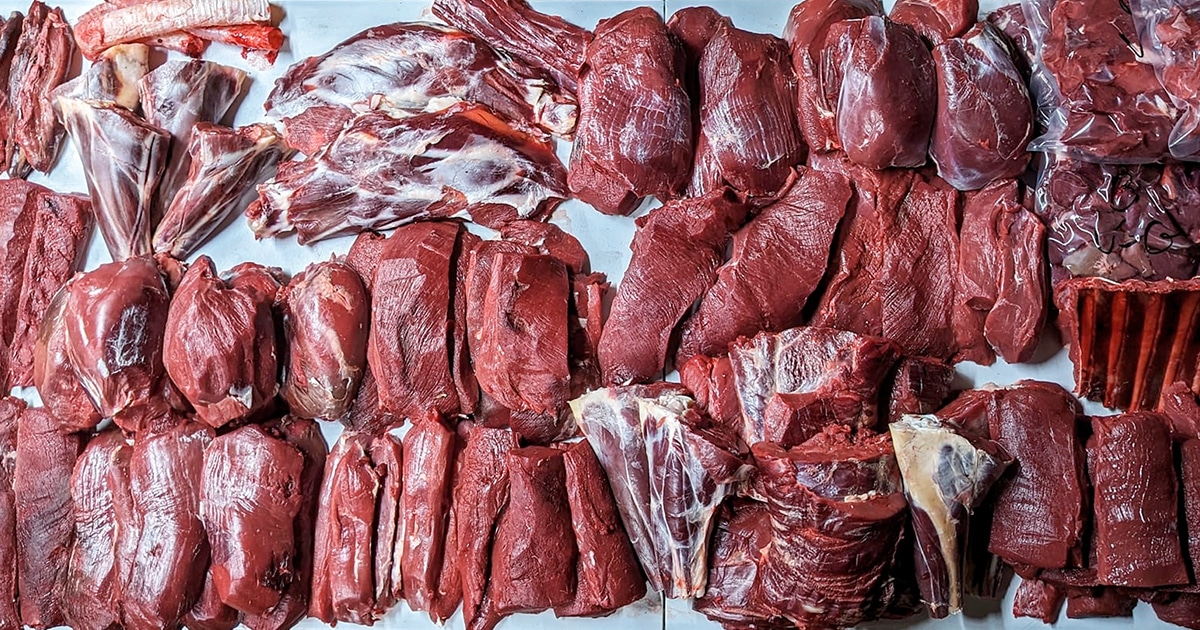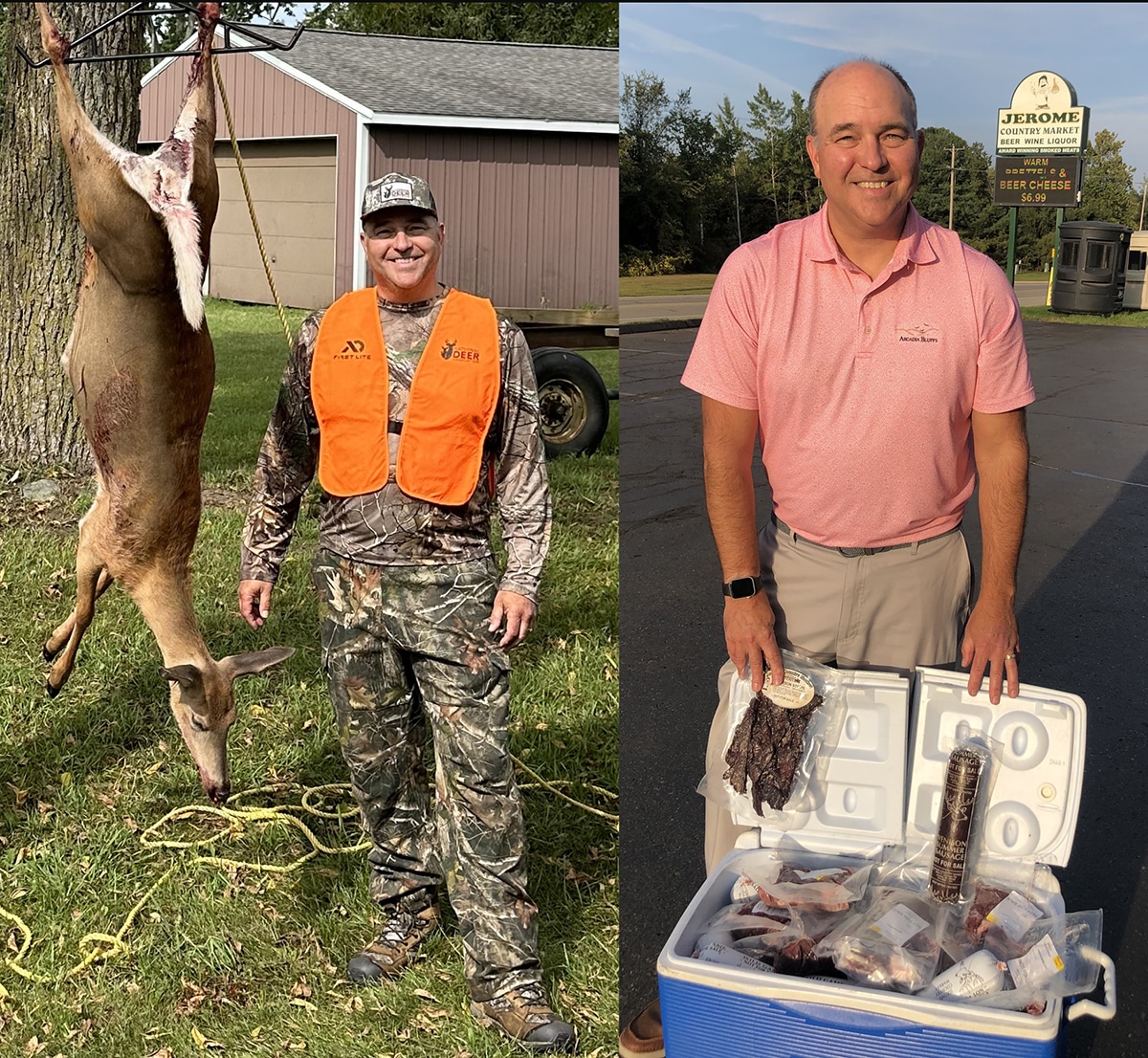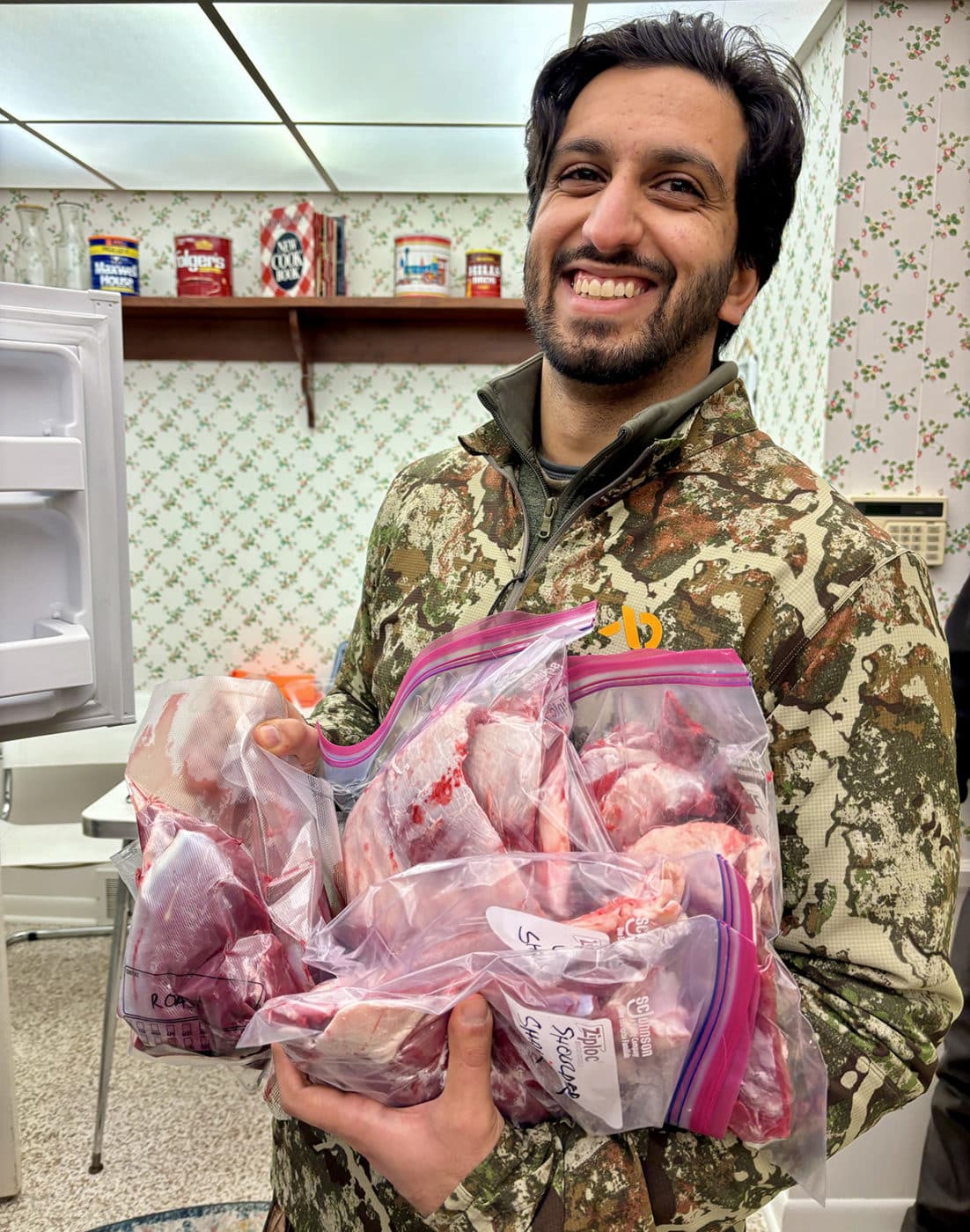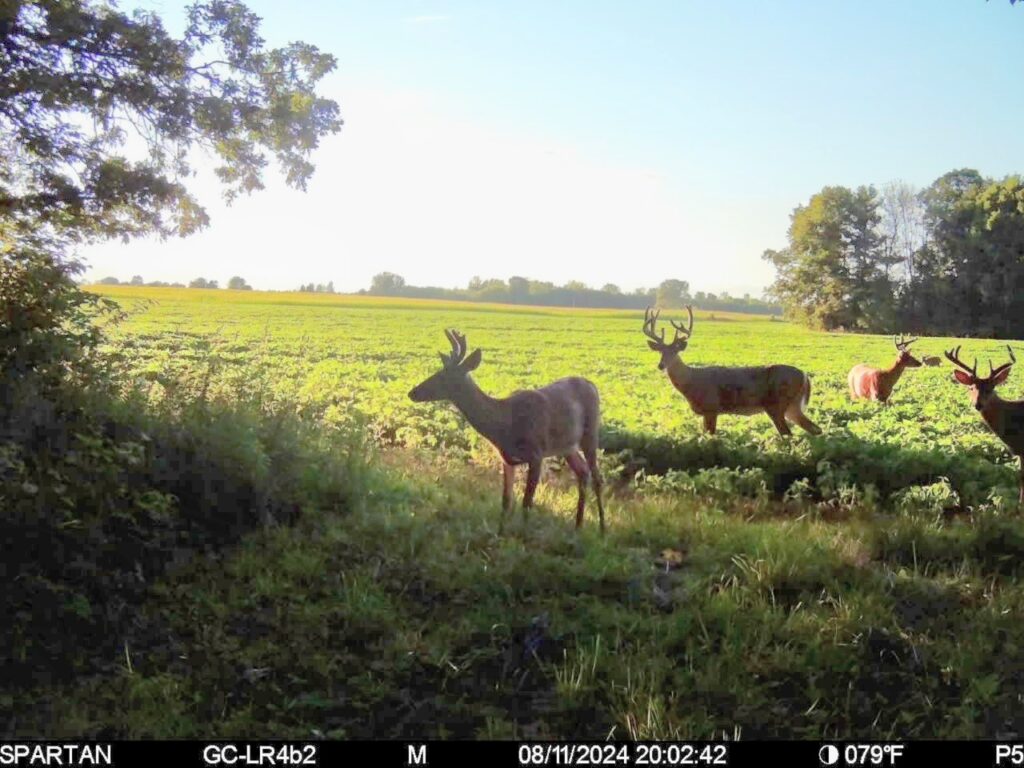
From scouting, to the thrill of the hunt itself, to the food we are able to procure, deer hunting is a year-round source of enjoyment. And when it comes to putting venison in the freezer, many hunters want to know what kind of yield to expect from the deer they’ve harvested. Knowing this can help us find a preferred processor or push us to improve our at-home butchering skills. The amount of food we can expect to take from a deer depends on several variables. Let’s take a look at each of them individually.
Shot Placement and Body Position
The locations of the entrance and exit wounds will affect the amount of usable venison that can be gleaned after damaged meat is trimmed and discarded. Do you shoot through the shoulder at the sweet spot for a quicker death and shorter blood trail? Or do you shoot behind the shoulder for less meat damage but a longer bloodtrail? This really comes down to hunter preference. I am often hunting in areas where a running deer can quickly end up on one of several neighboring properties, so the quickest kill is my preferred method.
Projectile Used
The type of projectile used will also have some bearing on our final numbers. Broadheads tend to create less hemorrhaging than bullets do, and that will affect the amount of meat that will need to be trimmed away.
Other Trauma
Tissue can get damaged in a number of other ways. Sparring bucks can inflict damage to each other with their antlers. Car collisions, miscellaneous puncture wounds, and previous encounters with other hunters can also create damage that results in a loss of meat.
Deer Size and Weight
The area of the country a deer comes from greatly affects its size and weight. Northern deer have much larger bodies than southern deer. They will also grow bigger where there is more nutrition available. Deer – especially bucks – grow bigger as they mature, and at similar ages, bucks are larger than does. Time of year also plays a role. Bucks put on a lot of muscle, especially in their necks, leading up to the breeding season. As fat reserves are used up over the winter, both bucks and does will lose weight.

Venison Butchering Skills
Even with the best of intentions, sometimes there’s a lot more meat left on the bone than we’d like. A skilled butcher, being able to visualize the bony structure underlying the meat, and knowing exactly how to maneuver his or her knife, will end up removing more meat from the bone than an amateur will. Some hunters who process their own deer at home may trim more heavily before grinding.
Cultural Differences
I’m talking about which parts are intentionally saved vs. which parts are discarded. Hunters differ on what parts they consider “worth the effort” or edible. Culture, family traditions, and how adventurous your palette is can make a huge impact on how much of a deer is utilized. Many hunters overlook cuts of meat such as the ribs, flank, and brisket, while others add them to the grind pile. Necks and shanks, when properly cooked, can become irresistibly tender and delicious but are sometimes discarded.
Other parts of the deer that can be saved and eaten include the heart, liver, spleen, kidneys, tongue, bone marrow, caul fat, testicles, intestines (for sausage casings), stomach (tripe), and even the lungs, trachea, brain, and head! I’ve even tried doe’s milk (spoiler alert: it’s good). But of course, in areas where chronic wasting disease has been found in some deer, you’ll want to stay away from high-risk parts, which include the brain, eyes, backbone and spleen. It is also not advised to eat liver from places with contaminants such as PFAS that accumulate in the liver.
Venison Processing Method
Do you like tomahawk steaks? Osso buco? Shoulder roast? The weight of your final product will obviously increase if there are bones included. Or if you’ve ordered sausages or other processed meats from your butcher, they will have fat, cheese, and other ingredients added to the mix.
But for this article, I’m focusing on the total weight of boneless venison (upper legs, shanks, neck, backstrap, tenderloins, and trimmings) with nothing added.

Venison Math
So where does this all leave us? How much venison can you expect to get from your deer? To find the best answer, I reviewed a lot of information from different sources. The easiest way to explain it is as a percentage, which can be raised or lowered to account for the different variables described above.
If we are looking at a field-dressed deer, with the innards removed but the hide still on and head and limbs still attached, the final boneless venison harvest will be about 48% of that weight. For example, from a mature doe that weighs 90 pounds field-dressed, you could expect to take home about 43 pounds of usable meat. A 130-pound field-dressed buck would yield 62 pounds of boneless venison on average.
That was the finding of a 2017 study by the Ohio Department of Natural Resources. Ohio Division of Wildlife staff recorded the field-dressed weight of 115 deer and compared it to the weight of boneless venison that resulted from the butchering process. The average Ohio buck in the sample weighed 129.69 pounds field-dressed and produced 62.51 pounds of venison (48.2%). Antlerless deer weighed 92.27 pounds field-dressed and yielded 45.05 pounds (48.83%). The combined average venison yield was 48.52%. I think 48% is a good rule of thumb to go by.
If we are looking at a carcass that has been field-dressed with hide, head, and lower limbs removed, we can expect to get closer to 60% of that weight in usable meat. Lower the percentage if meat is lost from tissue damage, and add some pounds if you are saving additional parts.
Enjoy Your Venison Harvest!
The amount of meat you can expect to get from a deer varies based on the animal’s size, amount of tissue damage, skill of the butcher, and parts you wish to save. By understanding these variables and honing your butchering skills, you can maximize the meat you save and enjoy the fruits of your hunt for months to come. Happy hunting, and may your next deer provide record yields!

